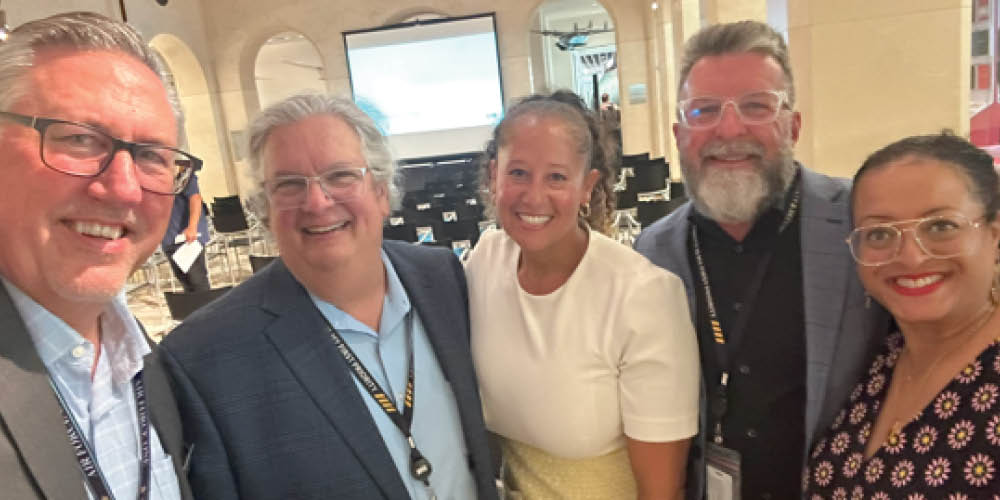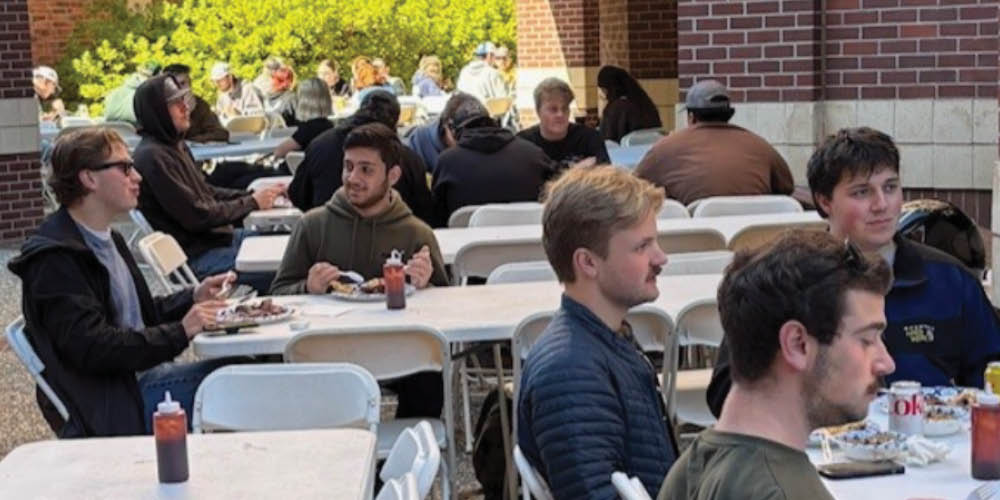
Austin Webcor Joint Venture, along with NIBBI and Skanska, held a joint LBE outreach event on September 11.
The SFO West Field Garage project provides a clear blueprint for this shift. With the client mandating that at least 20 percent of the labor force (30 percent on the design side) be comprised of Locally Based Enterprises (LBEs), Webcor has undertaken outreach to Bay Area LBEs, including two on-site events.
Instead of hosting a single, siloed event, the Austin Webcor Joint Venture, along with NIBBI and Skanska, held a joint LBE outreach event on September 11.
Webcor also partnered with SFO, including West Field Program Director Kristin Allen. "Because of this partnership, we were able to offer educational components in our presentation that addressed not only multiple contracting opportunities, but also labor compliance, local hire, bonding and insurance for our LBE partners, LBE compliance, and much more," says Outreach & Partnerships Manager Sharla Sullivan.
This multi-project approach significantly increased the range of available work scopes. As Project Director Wayne Campbell explained, "Webcor's project doesn't include every scope of work performed by local businesses, but many that we don't have, the other GCs did." This draws a deeper pool of LBEs.
Key subcontractors, including Rosendin, Cupertino, and Southland, also participated, demonstrating the entire ecosystem's commitment to local inclusion.
What does this intentional engagement yield? More than just signed contracts.
Mentorship in Action: The event functioned as a "mini mentorship program," allowing small firms to gain actionable advice directly from seasoned GCs and subcontractors.
Process Simplified: Airport representatives cut through bureaucratic fog by clearly detailing "what forms needed to be filled out and who they needed to contact" from each project team, making the process welcoming and clear, according to Wayne.
The Outcome: The LBEs who attended – a mix of specialists and small GCs – are now active candidates. This process, driven by Sharla's promotional efforts, directly feeds a pipeline of qualified, local firms into the project.
One example of the outcomes achieved by these events is Webcor’s hire of an LBE who attended the first outreach event. Their specialty: San Francisco’s Contracts Monitoring Division (CMD), which oversees companies’ compliance with LBE requirements.
Wayne expects several of the LBEs that attended the September 11 event to wind up working on the West Field Garage project.
This model exemplifies the spirit of Construction Inclusion Week. By actively developing and connecting with the local marketplace, firms ensure a more resilient supply chain and address the systemic barriers that often sideline smaller, diverse businesses. This isn't just a regulatory mandate; it is a strategic imperative that strengthens the company, the project, and the community.

The Webcor BBQ team joined forces with the CSU Chico recruiting team on October 16 to host a barbecue at the university as part of Construction Inclusion Week.
"We fed over 450 students and faculty from the Construction Management and Civil Engineering departments," says Webcor Concrete Sr. Project Manager David Bischoff. Chico alumni were represented on both the BBQ and recruiting teams.
"We're incredibly thankful to the faculty that helped organize the event," David says.
"The faculty and industry support were paramount to our success and growth while we were at Chico," David says.
"It meant so much to us to be able to give back the support we had while in attendance at Chico during those formative years."
Adrian Meraz and the Webcor Equipment warehouse team worked behind the scenes for the Webcor BBQ team.
Other key contributors to the event included Dennis Heimer, Ivan Ramos, Ron Hanneman, Patrick Haley, Matt Faith, Logan Murphy, Daisy Eggert, and Diane Oliver. From the CSU Faculty, Scott McCuthcheon provided critical support.

Webcor has been engaged in preconstruction on the Los Angeles Convention Center expansion for more than a year, ultimately demonstrating that the project could be delivered on budget and on schedule.
On October 1, the City of Los Angeles officially put shovels in the ground. This isn't just a symbolic gesture; it's the definitive and final starting gun for one of the most significant projects Webcor, in a joint venture with PCL, will undertake this decade.
The groundbreaking ceremony for the Los Angeles Convention Center Expansion and Modernization Project was a major event, a clarion call from City Hall that this project is non-negotiable and moving forward.
The site was packed with dignitaries, including Mayor Karen Bass, City Council members, and state lawmakers.
As Mayor Bass put it, this project is "more than just a building, it is about revitalizing the heart of our city and bringing good-paying jobs and tourism straight to downtown." The entire event was framed as an investment in the city's future, one that will generate 15,000 jobs and hundreds of millions of dollars in tax revenue.
Webcor Builders EVP Jit Pahilajani was one of the speakers at the event:
Webcor was well represented at the groundbreaking, as well. In addition to Jit, Webcorians in attendance were Project Planning Sr. VP Allison McCue, Matt Johnson, Taylor Manavian, Ryan Gerber, and Brooke Walbuck.
“It was incredibly meaningful to be there to witness the groundbreaking of this critically important project to our city,” Brooke says. “Hearing Jit speak alongside our civic leaders and stakeholders who have championed moving the project forward fueled excitement and optimism for the future of LA, and an investment that will serve as the catalyst for growth and recovery of our Downtown core. We can all be so proud to be a part of delivering this vision after such a long and difficult course!”
Many Webcorians have already been doing the heavy lifting to get us here, but now the tempo accelerates. We're on the clock.
The ultimate is the 2028 Los Angeles Olympic and Paralympic Games. The facility needs to be "Olympic ready" by Spring 2028 to host events like fencing and wrestling.
Our job, as the General Contractor Joint Venture (PCL Construction/Webcor Construction), is to deliver a new LACC that achieves three goals:
This is where Webcor’s experience building massive, complex structures pays off. We are tasked with delivering a generational opportunity for an iconic American city.
The Convention Center will remain open during construction, requiring intense coordination and focus from all teams. This is precisely the kind of complexity we thrive on.
We are already past the talking stage. We’re past the paperwork. Now, we move past preconstruction. We are officially in the execution phase. This is what we’re built for.
